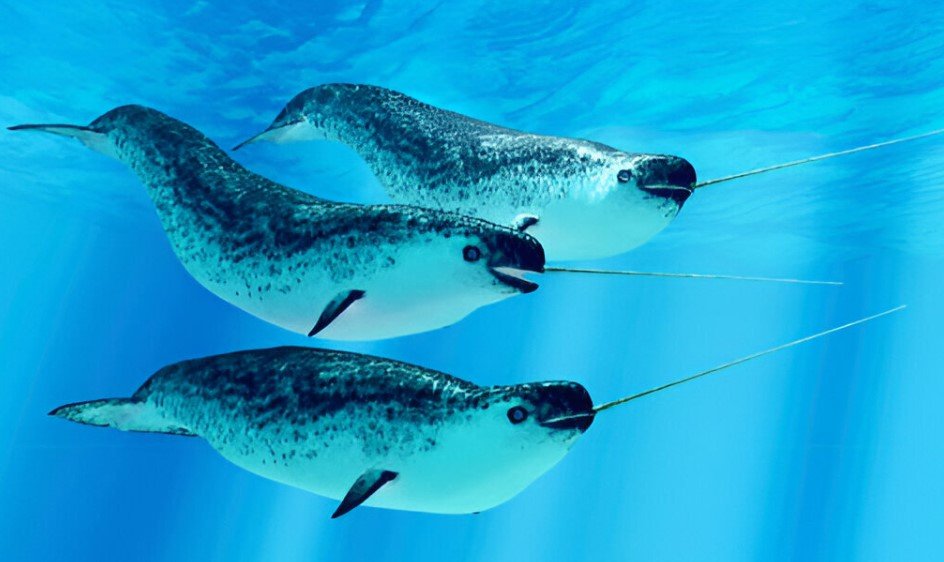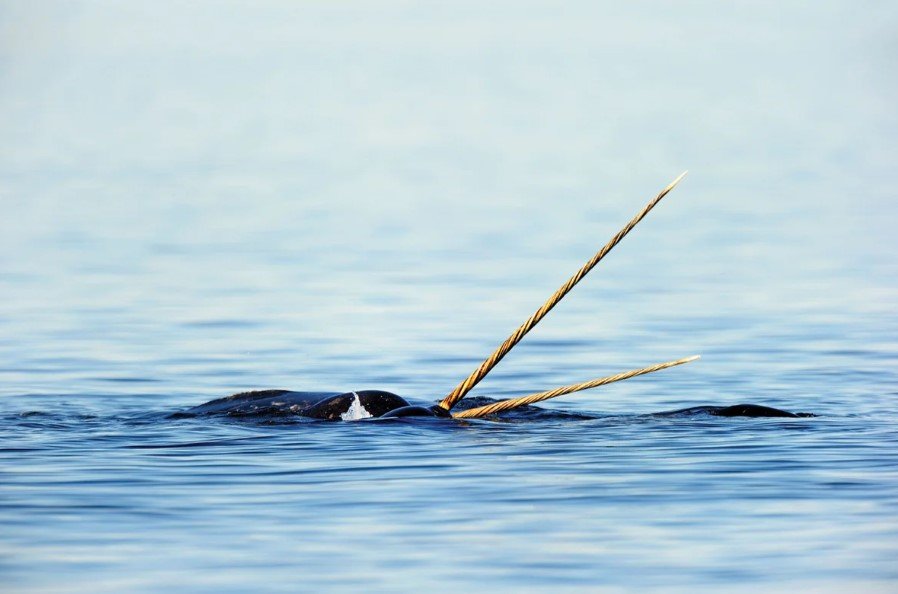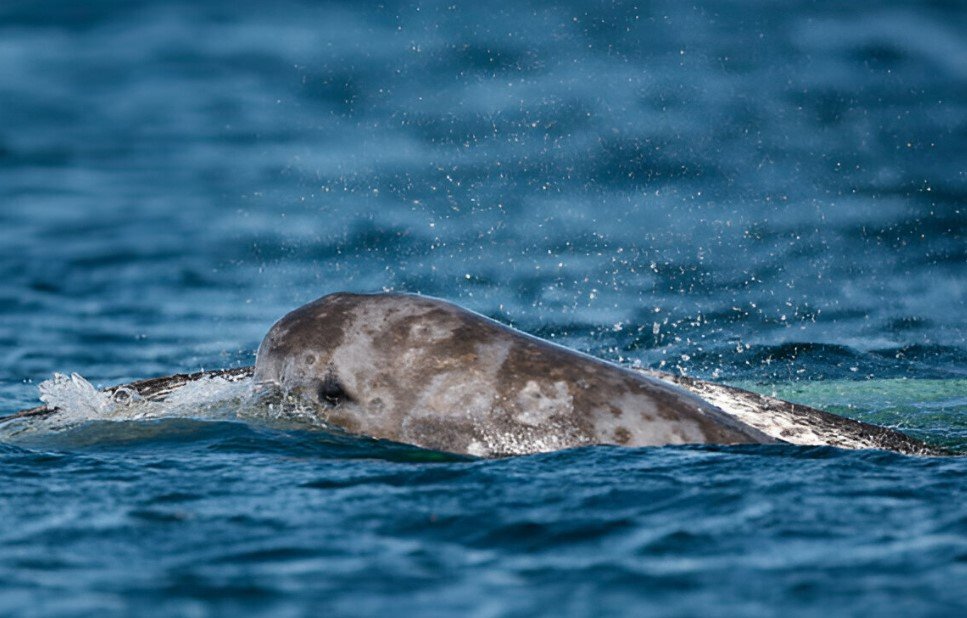Animals
What Animal is the Unicorn of the Sea?

The “unicorn of the sea” is a nickname for a very special animal: the narwhal. This marine mammal is known for its long, spiral tusk that looks like the horn of a unicorn. Narwhals are fascinating creatures that live in the cold waters of the Arctic. In this article, we will explore the narwhal, its unique features, habitat, diet, behavior, and why it has earned the nickname “unicorn of the sea.”
What is a Narwhal?
A narwhal is a type of whale that belongs to the family Monodontidae, which also includes the beluga whale. Narwhals are medium-sized whales that can grow up to 16 feet (5 meters) in length. However, what makes them stand out is the long tusks that males usually have, which can reach up to 10 feet (3 meters). This tusk is an elongated tooth that grows through the upper lip, and it is often spiral-shaped.
Though the tusk is most commonly associated with males, around 15% of female narwhals also have a smaller tusk. The tusk is one of the most unique features of any animal on Earth, and it has fascinated people for centuries. Historically, some believed that narwhal tusks were the horns of mythical unicorns, which is why the narwhal has earned the nickname “unicorn of the sea.”
| Category | Details |
| Conservation Status | Least Concern (IUCN 3.1) |
| CITES Listing | Appendix II (CITES) |
| Domain | Eukaryota |
| Kingdom | Animalia |
| Phylum | Chordata |
| Class | Mammalia |
| Order | Artiodactyla |
| Infraorder | Cetacea |
| Family | Monodontidae |
| Genus | Monodon |
| Species | M. monoceros |
| Binomial Name | Monodon monoceros (Linnaeus, 1758) |
Where Do Narwhals Live?
Narwhals are found in the Arctic waters around Greenland, Canada, and Russia. They prefer the cold, icy waters of the Arctic Ocean, which provide them with the environment they need to survive. Narwhals spend most of their time in areas where the ice cover is thick, and they are known to dive to great depths in search of food.
During the summer months, narwhals are often found closer to shore, in fjords and bays where the ice is thinner. In the winter, they migrate to deeper waters where the ice is thickest, and they can use cracks in the ice to breathe. The harsh conditions of the Arctic help protect narwhals from many predators, but they must still be careful of animals like polar bears and orcas.
What Do Narwhals Eat?
Narwhals are carnivores, and their diet consists mainly of fish, squid, and other marine invertebrates. They have a specialized feeding technique that allows them to hunt in the deep, dark waters of the Arctic. Narwhals use their tusk to help them find food, but it is not used to stab or spear prey as many people believe. Instead, the tusk may help them detect changes in water pressure and temperature, which could lead them to schools of fish or squid.
Narwhals dive to great depths, sometimes as deep as 1,500 meters (about 4,900 feet), to find their food. They can hold their breath for long periods, sometimes up to 25 minutes, allowing them to search for food in the deep ocean. Their diet mainly consists of fish like Arctic cod and halibut, as well as squid and shrimp.
How Do Narwhals Use Their Tusks?
While the exact function of the narwhal’s tusk is still debated by scientists, there are a few theories. The tusk is a tooth that grows through the male narwhal’s upper lip, and it can spiral to a great length. Some researchers believe that the tusk is used in social interactions, with males possibly using them to demonstrate strength or dominance.
Other scientists think that the tusks might have a sensory function. The tusk has millions of tiny nerve endings that could allow the narwhal to sense changes in the environment, such as water temperature and pressure. This could help narwhals locate food or find their way through the icy waters of the Arctic. However, more research is needed to fully understand the tusk’s role in narwhal behavior.

Image Source: Scientific American
Narwhal Behavior and Social Structure
Narwhals are social animals and live in groups called pods. These pods can vary in size, with some groups consisting of only a few individuals, while others may have hundreds of narwhals. The pods are usually made up of close family members, and the narwhals work together to find food and protect each other from predators.
During the summer months, when the ice is thinner, narwhals gather in larger groups. They communicate with each other using clicks, whistles, and other sounds that help them navigate the icy waters and stay in touch with other members of their pod. Narwhals have good hearing and can communicate over long distances using sound waves.
Male narwhals, especially those with larger tusks, often engage in battles with each other. These battles are usually not violent but involve the males using their tusks to “spar” or push against each other. These contests may help determine which male gets the chance to mate with females. The tusks are important in social and mating behaviors, though they do not seem to be used for hunting or self-defense.
Why Are Narwhals Important?
Narwhals play an important role in the Arctic ecosystem. As predators, they help control the populations of fish and other marine animals, which helps maintain the balance of the food chain. Narwhals are also a key part of the cultural and spiritual heritage of indigenous peoples in the Arctic, who have relied on these animals for food and materials for thousands of years.
Sadly, narwhals face threats due to climate change. As the Arctic warms and sea ice melts, the narwhals’ habitat is being disrupted. The loss of sea ice makes it harder for them to find food and places to breathe, and it also opens up the Arctic to increased shipping and industrial activities, which can disturb narwhal populations. Additionally, narwhals are vulnerable to hunting by humans, though hunting has been regulated in some areas to help protect their numbers.

Image Source: Getty Images
Conservation Efforts for Narwhals
Efforts are being made to protect narwhals and their Arctic habitat. Several organizations and governments have taken steps to regulate hunting and reduce human impact on narwhal populations. Additionally, scientists are studying narwhals in the wild to better understand their behavior, migration patterns, and how they are affected by climate change.
Narwhals are also protected by international agreements, such as the Agreement on the Conservation of Narwhal and Beluga Whales, which aims to safeguard their populations in the Arctic. While narwhal populations are not currently at risk of extinction, conservation efforts are crucial to ensuring that they continue to thrive in the face of environmental challenges.
Conclusion
The narwhal, often referred to as the “unicorn of the sea,” is a unique and fascinating animal. With its long, spiral tusk and its ability to live in the cold, icy waters of the Arctic, the narwhal has captured the imagination of people for centuries. This marine mammal plays an important role in the Arctic ecosystem and is an important symbol for the indigenous people of the region. However, narwhals face many challenges, including the impacts of climate change and human activities. By protecting their habitat and ensuring sustainable management, we can help preserve this incredible creature for generations to come.
-

 Tech2 months ago
Tech2 months agoSora 2 Invite Code: How to Get One (Step-by-Step Guide)
-

 Fashion2 months ago
Fashion2 months agoWhy You Should Invest in Classic Clothing Over Short Trends
-

 Tech2 months ago
Tech2 months agoThe Role of Integrated Automation Solutions in Smart Manufacturing
-

 Tech2 months ago
Tech2 months ago5 Practical Ways to Spot Fake or Unreliable PoS Terminals






